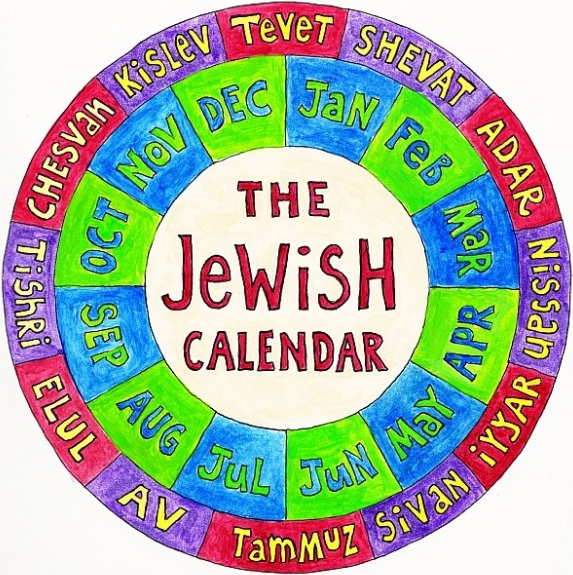Dear Congregation Beth Israel members and friends,
This year is a Leap Year… twice. On the Gregorian calendar, we get February 29th, an extra day added every four years to more or less keep our 365-day calendar aligned with the sun. On the Jewish calendar, we get not an extra day but a whole extra month. In a Jewish leap year, the month of Adar – of which we say “When Adar enters, joy increases” – happens twice.

This is what our year looks like… except sometimes there are two Adars.
Imagine the secular calendar going, “January, February, March, Another March, April…” seven times out of every 19 years. That’s what the Jewish calendar does. When there are two months of Adar, like this year, we get an extra month in between Tu BiShvat (the New Year of the Trees) and Purim, our festival of masks and merriment. (Followed, a month later, by Pesach.)
I’ve never been able to understand how the sages did the math to figure out that this needs to happen seven out of every 19 years in order for our holidays to more or less be where they are.
But I don’t need to understand how it works in order to understand that it does work. This metonic system (the technical term) ensures that Sukkot is in the fall and Pesach in the spring.
So what will we do with our extra month? Mostly, I think, it’s a month of antici…pation. It stretches out the time before Purim and Pesach. Maybe anticipating them makes them sweeter.
Maybe you’ll come to our Healing Havdalah on 3/2, which will feature a reading and book signing with Cindy Polinsky, author of The Double Chai Café, a true story of cancer and miracles.
Those of us who are crafty might spend the month working on a costume for Purim. We’ll be having a Purim Party on 3/23, like the spirited dance party we held on Simchat Torah – don’t miss it. (Expect great live music, terrific locally-sourced food, kids in costumes, a re-enactment of the Purim story, and merriment for all ages. It’s a CBI and NEFESH co-production.)
In a year with only one Adar, Purim falls at the full moon. When there are two Adars, Purim comes during the second one. The full moon of Adar 1 is called Purim Katan (“Little Purim”), and our sages teach that it’s just like Purim except that we don’t read the megillah or give gifts of food. Wait, what? How is it just like Purim when it isn’t in any outward way like Purim at all?
Here’s how I understand Little Purim this year. If we remove the story of Esther, the hamantaschen, the graggers / noisemakers, the costumes and masks, and the mishloah manot (gifts of food), all that’s left of Purim is a sense of joy. A sense that even when the world is topsy-turvy, things will turn out okay in the end, so if they’re not okay, it must not be the end.
That’s what I’m carrying with me into this first month of Adar. That, and the knowledge that during both months of Adar the days will continue getting longer, bit by bit. By the time we get to the second full moon of Adar, we’ll be just past the vernal equinox – officially done with winter and heading into spring! That sounds like joy increasing to me, for sure.
Blessings to all for a joyful first month of Adar,
— Rabbi Rachel





